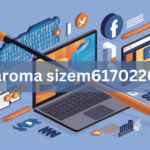Discover how automation in healthcare reduces administrative burden, boosts accuracy, and improves workflows.
Automation is no longer a buzzword; it is a game-changer shaping industries worldwide. Within the healthcare sector, administrative tasks can account for a stunning percentage of professionals’ working hours, contributing to burnout and inefficiencies. Innovative automation systems are now poised to drastically reduce this workload, enabling medical staff, office managers, and decision-makers to refocus on what matters most—patient care.
This blog will explore how automation is being applied to streamline various healthcare administrative functions, from patient care to medical data management.
Why Administrative Burden Matters
Administrative tasks, ranging from scheduling appointments to handling insurance claims, place a heavy strain on healthcare professionals. A recent study revealed that nearly one-quarter of a physician’s working hours is spent on non-clinical tasks. These processes often result in errors, delayed treatments, and overall inefficiency.
Automation offers a critical advantage in simplifying these workflows and minimizing human error. For healthcare innovators and tech enthusiasts alike, the question isn’t whether to adopt automation—but how to integrate it effectively into operations.
Applications of Automation
1. Patient Scheduling and Communication
Automated scheduling tools can manage appointments seamlessly, offering patients self-service options to book, change, or cancel appointments online. Beyond scheduling, automation ensures follow-up reminders and allows medical offices to maintain better communication through automated text messages or emails. This improves patient satisfaction while reducing no-shows and easing the workload for administrative staff.
2. Billing and Claim Processing
Medical billing and insurance claims are prime candidates for automation. Software solutions can handle tasks like claim entry, error identification, and insurance verification more efficiently and accurately than manual processes. Not only does this reduce processing time, but it significantly lowers the risk of errors and reimbursement denials.
3. Data Management and Recordkeeping
Managing Electronic Health Records (EHR) is foundational in healthcare, yet it is time intensive. Automated data entry systems can update records, retrieve patient information, and generate reports much faster than manual efforts. This system ensures compliance with regulations while maintaining data accuracy, enabling smoother interdepartmental workflows.
4. Prescriptions and Medication Management
One of the critical burdens in healthcare is prescription management. Automation tools like e-prescribe software make the process of prescribing and managing medication more efficient by generating digital prescriptions, tracking patient history, and streamlining communication with pharmacies. Additional benefits, such as price transparency and medication alternatives, enhance patient adherence and safety.
5. Human Resource Tasks and Onboarding
Healthcare organizations can use automation for recruiting, onboarding, and managing staff. With streamlined HR software, administrative teams can save time on routine tasks such as payroll, training, and compliance tracking, ensuring smoother operations.
Key Benefits of Automation in Healthcare
1. Time Saving
Automation dramatically reduces the time spent on repetitive tasks, allowing professionals to focus on strategic or patient-facing roles. For instance, scheduling an appointment manually might take up to 10 minutes, whereas automated scheduling is instantaneous.
2. Enhanced Accuracy
Human error is an inevitable risk in manual operations, particularly within complex fields like medical billing or data entry. With automation, tasks are performed with precision, ensuring compliance and better overall outcomes.
3. Cost Efficiency
While automation systems have upfront costs, they save healthcare facilities significant expenditure in the long term by cutting labor costs, reducing errors, and optimizing workflows.
4. Improved Patient Experience
Patients benefit significantly from quick appointment scheduling, better communication, and enhanced care coordination—all enabled through automation. Streamlined processes directly impact patient satisfaction and retention.
5. Scalability
Automation doesn’t just benefit current operations—it prepares facilities for future growth. With automated systems in place, scaling workflows to handle more patients or expand services is a seamless transition.
How to Successfully Adopt Automation
- Define Your Needs – Evaluate your practice’s pain points where time and resources are being lost, and prioritize those areas for automation.
- Choose the Right Tools – Not every automation solution fits every healthcare facility. Whether you need advanced e-prescribe software or automated billing tools, ensure your chosen platform integrates seamlessly with your workflows.
- Train Your Team – Proper training is essential to maximize the benefits of automation tools.
- Monitor and Adapt – Regularly review the performance of automated systems to ensure they meet your expectations and are aligned with your organizational goals.
Harness Automation for a Better Tomorrow
Automation is undeniably shaping the future of healthcare. By adopting innovative tools to improve administrative workflows, healthcare organizations can better serve their staff while elevating the patient experience. From streamlining scheduling to advanced solutions like e-prescribing software, the opportunities are vast and transformational.
Whether you’re a healthcare innovator, office manager, or medical professional, now is the time to leverage automation to reduce administrative burdens, save time, and improve overall service quality.
Start exploring intelligent automation and discover how your organization could thrive with fewer manual tasks and greater efficiency.



